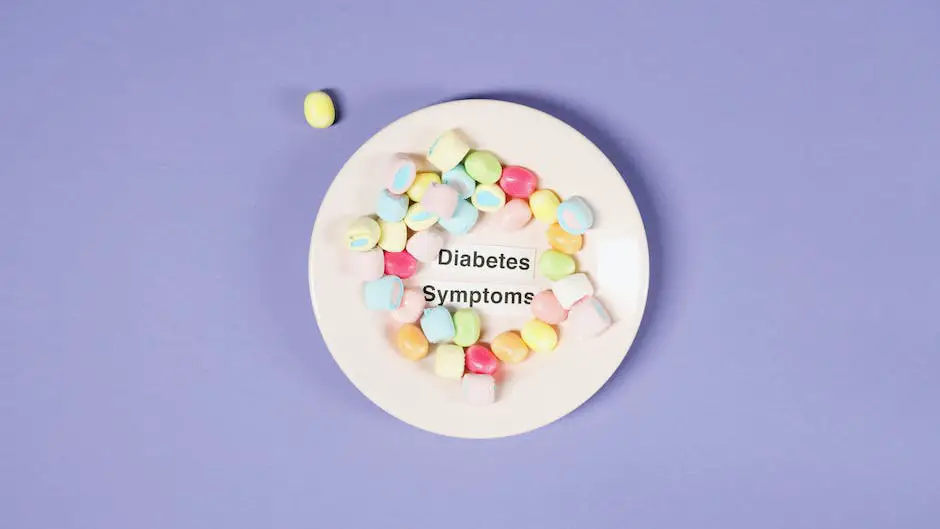Type 2 diabetes, a condition characterized by high blood sugar levels, is a burgeoning health crisis with a substantial presence in the male population. Distinctly noticeable signs such as excessive thirst, frequent urination, unexplained weight loss, heightened sense of hunger, and sexual dysfunction mark the onset. While a common disease around the world, its impact and manifestation in men differ significantly. The following text aims to explore and unravel these signs, lending an understanding of how these symptoms develop, why they are notable in males, and how drastically they can influence an individual’s day-to-day life.
Identifying Common Symptoms of Type 2 Diabetes in Males
Symptoms of Type 2 Diabetes in Males
Type 2 diabetes, a medical condition characterized by high blood sugar levels, has several distinctive signs and symptoms that can develop in males. Some of the most common symptoms include excessive thirst and frequent urination, which occur as the body tries to rid itself of excess glucose through urination, leading to dehydration and therefore increased thirst. Unexplained weight loss is another symptom, where the body starts to burn stored fat for energy due to an inability to properly utilize glucose. Furthermore, an increase in hunger can also be observed, as the body’s cells are unable to access glucose for energy.
Men with type 2 diabetes may also experience sexual dysfunction, a symptom that often occurs more prominently in males than females. This is due to high blood sugar levels, which can cause damage to nerve and blood vessels, notably those that supply the penis. As a result, men may experience erectile dysfunction, a condition that involves difficulties in achieving or maintaining an erection. This sexual dysfunction can be distressing and has implications on one’s overall well-being, relationships, and quality of life.
The daily life of individuals with type 2 diabetes can vary greatly based on the range of symptoms they experience. For some, their routine may be frequently disturbed by an increased need to urinate, while others may suffer from fatigue due to disrupted sleep patterns or the need for urination during the night. Mood changes are also common amongst diabetes sufferers due to the rapid fluctuations in blood sugar levels. If diabetes goes unchecked and blood sugar levels remain consistently high, it could lead to serious health complications including heart disease, kidney damage, and vision loss. For this reason, it is crucial for men to be aware of these symptoms. An early recognition and prompt treatment can help prevent or manage these complications effectively.

Understanding Serious Complications and Signs
Understanding the Severe Consequences of Unmanaged Type 2 Diabetes in Males
It’s vital to grasp the severe symptoms and potential complications that can arise from improperly managed type 2 diabetes in men. Blood sugar levels that remain unchecked can lead to cardiovascular issues. This happens when high blood sugar levels contribute to the shrinking and blockage of blood vessels, resulting in heart conditions like angina, heart attack, stroke, and peripheral artery disease. Additionally, prolonged high blood sugar can cause neuropathy, a disorder where an excess of sugar in the blood can harm the walls of the small blood vessels feeding the nerves, especially in the legs, leading to sensations such as tingling, numbness, burning, or pain.
Kidney damage or nephropathy is another serious condition often experienced by men with type 2 diabetes. This occurs when the kidneys are overworked due to prolonged high blood sugar levels, causing them to progressively lose their function. If this kidney damage isn’t addressed, it may lead to total kidney failure or incurable end-stage renal disease, necessitating dialysis or a kidney transplant. Moreover, erectile dysfunction – the inability to maintain an erection firm enough for sexual intercourse – is a common issue amongst men with type 2 diabetes, as the ailment can damage the blood vessels and nerves responsible for erections.
Understanding and Tackling Type 2 Diabetes in Males
One of the key steps in preventing the complications of Type 2 diabetes is managing your blood sugar levels, maintaining a nutritious diet, and leading an active lifestyle. It is vital to continually monitor your health condition through regular check-ups and take immediate corrective actions when abnormal results arise.
Awareness of the symptoms is the initial step. Men who notice these symptoms should act promptly. Changes in lifestyle, incorporating regular exercise, adhering to a balanced diet, and consulting with a medical professional to regulate their blood sugar levels are crucial steps to take. Regular screenings for any complications and having prompt treatment if symptoms arise can make a significant difference in preventing the advancement of these serious complications.

Preventive Measures and Lifestyle Adjustments
Adopting Lifestyle Changes in the Management of Type 2 Diabetes in Males
The first line of defence in managing and preventing Type 2 diabetes is the induction of healthy lifestyle changes. These changes could include optimizing your diet, integrating regular exercise into your routine, and keeping up with regular health assessments. When adjusting your diet, try to reduce sugar, saturated fats, and alcohol while noticeably increasing fibre intake via healthy portions of fruits, vegetables, and whole grains.
Regularly scheduled meals can also maintain steady blood sugar levels, resulting in fewer insulin spikes. Exercise is just as crucial in managing Type 2 diabetes. Not only does it help with weight control, but it can also enhance your body’s sensitivity to insulin. Strive for a minimum of 30 minutes of moderate exercise, such as brisk walking, swimming, or cycling, most days of the week. Regular doctor’s appointments can provide insight into your blood sugar levels, cholesterol, blood pressure, and other fundamental health indicators.
Implementing Lifestyle Changes Successfully
The successful implementation of these lifestyle changes often requires motivational strategies and a clear understanding of one’s health implications. Understanding that these lifestyle adjustments lower the risk of developing serious health complications like heart disease and stroke that are associated with Type 2 diabetes should motivate men to take action.
To ensure the successful implementation of these adjustments, setting small, achievable goals can help. For example, instead of eliminating foods you enjoy, try substituting them with healthier alternatives. Slowly increase your physical activity level rather than starting an intense workout regimen abruptly. Regularly monitoring your progress by regularly checking your blood glucose levels and scheduling routine health check-ups can also serve as motivation, as you’re able to see and track the results of your efforts.

Awareness, early detection, and management are the pillars of living healthily with type 2 diabetes. Underscoring these aspects, lifestyle alterations like nutritious eating, regular physical activity, and consistent health check-ups can play a pivotal role in warding off the disease or maintaining it effectively. Listening to our bodies and observing the onset of any mentioned signs can be the first step towards prevention or early treatment. Everyone, more so men, should take proactive steps in understanding these markings to help reduce the risk of severe complications while enhancing the quality of life.
